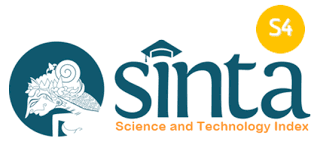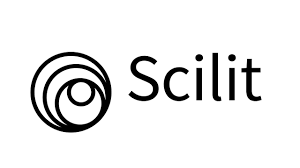A COMPARATIVE STUDY OF CONTAMINATED RIPARIAN ZONE FOR ECO LANDSCAPE DEVELOPMENT STRATEGY
Abstract
The transition between terrestrial and aquatic ecosystems has been known as Riparian Zone. The riparian zone is where generally water flows rarely stagnant, which river is an intermediate plateu. Conversely, rivers, stream or lakes water flows can be stagnant in common situation. Svejcar in his article stated that as transition, riparian zone tends to have characteristics of both upland and aquatics ecosystems. Water contamination brings the effect on reforming the environment degradation whether they are directly or indirectly discharged into water bodies without adequate treatment. Various notable water rehabilitation projects in leading countries led to their substantial economic returns for many aspects by the government-led initiatives. Nature-inclusive solution has been heavily concerned for the mega projects. In which ecological landscape design can provide the ecosystem services to balance the engineering driven restoration projects. To include, the best practice management requires extended understanding of the pattern in order to allow optimum evaluation of the process relationship. This research is conducted by an explanatory method where writer observe the relevant writings and theory to evaluate riparian areas with support on both primary and secondary data. A comparison table has been conducted to determine the most optimum approach has done by three different cities in two big countries. They are Siak River, Riau, Indonesia between Citarum River in Bandung and Yangtze River in China. This comparison will explain the elements observe among the three rivers and follow by the explanatory theory that has been conducted, a best practice management for landscape design to be evaluate.
Keywords
Full Text:
PDFReferences
Environment Canterbury Regional Council. (2011). Riparian Zones. A guide to the protection of Canterbury's rivers, streams, and wetlands. Canterbury: Impact of riparian buffer zones on water quality and associated management considerations.
Water and Rivers Commission. (2000). The values of the riparian zone. East Perth: Government of Western Australia.
Nu'man. (2004). Karakteristik perkembangan pemukiman tepian sungai Siak: Studi Kasus Kelurahan Kampung Bandar Kecamatan Senapelan Kota Pekanbaru. Yogyakarta: Universitas Gadjah Mada.
Siegel, H. (2008). Siak River System-East Sumatra. Characterisation of Siurces, Estuarine processes, and Discharge into the Malacca Strait. Journal of Marine Systems, 1-2.
I, J. (2015). Uncertainty and sensivity analysis of West Java Water Sustainability Index-A case study on Citarum catchment in Indonesia. Ecological Indicators, 1-5.
Djuangsih, N. (1993). Understanding the state of river basin management from an environmental toxicology perspective: an example from water pollution at Citarum river basin, West Java, Indonesia. The Science of the Total Environment, Supplement, 287-291.
Anbumozhi, V. (2004). Impact of riparian buffer zones on water quality and associated management considerations. Science Direct Ecological Engineering, 518-523.
Agustina, Y. (2012). ANALISIS BEBAN DAN INDEKS PENCEMAR DI TINJAU DARI PARAMETER LOGAM BERAT DI SUNGAI SIAK KOTA PEKANBARU. JURNAL ILMU LINGKUNGAN, 168-169.
Baum, A. (2007). Relevance of peat draining rivers in central Sumatra for the riverine input of dissolved organic carbon into the ocean. ScienceDirect Estuarine Coastal and Shelf Science, 563.
Sittadewi, E. H. (2005, Agustus). IDENTIFIKASI VEGETASI DI KORIDOR SUNGAI SIAK DAN PERANANNYA DALAM PENERAPAN METODE BIOENGINEERING. Jurnal Sains dan Teknologi Indonesia, 10(2), 112-113.
Hermawanto, T. D. (2011). KEBIJAKAN PEMERINTAH DALAM PENGENDALIAN PENCEMARAN AIR SUNGAI SIAK (Studi pada Daerah Aliran Sungai Siak Bagian Hilir). Jurnal Ilmu Politik dan Ilmu Pemerintahan, 1(1), 78.
Rixen, T. (2010). Dissolved oxygen and its response to eutrophication in a tropical black water river. Journal of Environmental Management, 1731-1732.
Kijne, J. W. (2005). Abiotic stress and water scarcity: Identifying and resolving conflicts from plant level to global level. Field Crops Research, 13-16.
Ismy, F. (2012). ANALISIS KUALITAS AIR DAN KELUHAN GANGGUAN KULIT PADA MASYARAKAT PENGGUNA AIR SUNGAI SIAK DI PELABUHAN SUNGAI DUKU KELURAHAN TANJUNG RHU KECAMATAN LIMAPULUH KOTA PEKANBARU TAHUN 2012. Medan: Universitas Sumatera Utara.
Comte, I. (2012). Agricultural Practicesin Oil Palm Plantations and Their Impact on Hydrological Changes, Nutrient Fluxes and Water Quality in Indonesia: A Review. Advances in Agronomy, 116, 72-73.
Sinaga, N. (2013). Integrated Citarum Water Resource Management Investment Program. Changwon: Ministry of Forestry.
Svejcar, T. (1997). Riparian Zone: 1) What are they and How do they work? Oregon: USDA-Agricultural Research Service and Oregon State University.
H, S. E. (2005). Identifikasi vegetasi di koridor sungai siak dan peranannya dalam penerapan metode bioengineering. Jurnal sains dan teknologi indonesia, 112-113.
N, S. (2013). Integrated Citarum Water Resource Management Investment Program.
Ye, S. (2011). Distribution, Endemism and Conservation Status of Fishes in the Yangtze River Basin, China.
Gret-Regamey, A. (2016). River rehabilitation as an opportunity for ecological landscape design. Elsevier.
DOI: http://dx.doi.org/10.22441/vitruvian.2021.v10i3.005
Refbacks
- There are currently no refbacks.
Copyright (c) 2021 Vitruvian : Jurnal Arsitektur, Bangunan, dan Lingkungan
License URL: http://publikasi.mercubuana.ac.id/index.php/virtuvian/article/view/10665
Layout Jurnal Vitruvian:Download
Declaration & CTA Form Vitruvian:Download
(WAJIB DI UPLOAD SEBAGAI SUPLEMENTARY SAAT SUBMIT ARTIKEL)
Vitruvian
Program Studi Arsitektur
Fakultas Teknik Universitas Mercu Buana
Jl. Raya Meruya Selatan, Kembangan, Jakarta 11650
Tlp./Fax : +62215871335
Surel : [email protected]
p-ISSN : 2088-8201
e-ISSN : 2598-2982
Website : http://publikasi.mercubuana.ac.id/index.php/virtuvian
DOI : 10.22441/vitruvian
Vitruvian is indexed by the following abstracting and indexing services:

This work is licensed under a Creative Commons Attribution-NonCommercial 4.0 International License.








